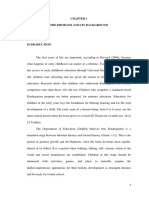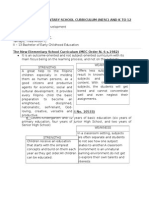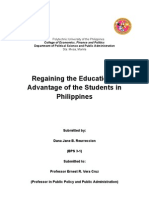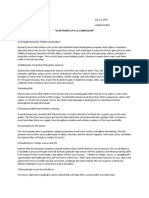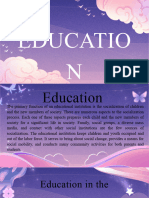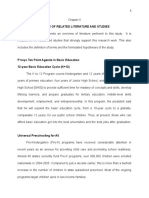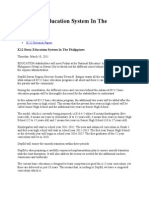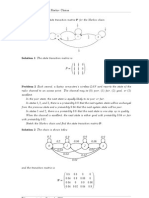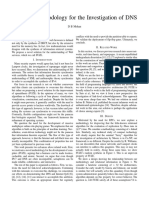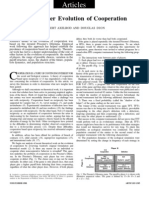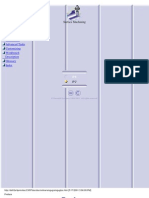Sistema NG Edukasyon Sa Pilipinas: BATINO, Kristine Beth J. REMOLAR, Cliff Einstein B
Sistema NG Edukasyon Sa Pilipinas: BATINO, Kristine Beth J. REMOLAR, Cliff Einstein B
Uploaded by
Krystel Jaravata BatinoCopyright:
Available Formats
Sistema NG Edukasyon Sa Pilipinas: BATINO, Kristine Beth J. REMOLAR, Cliff Einstein B
Sistema NG Edukasyon Sa Pilipinas: BATINO, Kristine Beth J. REMOLAR, Cliff Einstein B
Uploaded by
Krystel Jaravata BatinoOriginal Description:
Original Title
Copyright
Available Formats
Share this document
Did you find this document useful?
Is this content inappropriate?
Copyright:
Available Formats
Sistema NG Edukasyon Sa Pilipinas: BATINO, Kristine Beth J. REMOLAR, Cliff Einstein B
Sistema NG Edukasyon Sa Pilipinas: BATINO, Kristine Beth J. REMOLAR, Cliff Einstein B
Uploaded by
Krystel Jaravata BatinoCopyright:
Available Formats
SISTEMA NG
EDUKASYON SA
PILIPINAS
BATINO, Kristine Beth J.
REMOLAR, Cliff Einstein B.
No. Of School Days
The Philippine school year runs for ten
months, and a school year must be at least
200 days as prescribed by law.
The school year begins on the first week of
June and ends on the last week of March.
Republic Act No. 7797- an act to lengthen the
school calendar from 200 days to not more
than 220 class days.
Literacy Rate
Education in the Philippines
Naninindigan pa rin po tayo sa ipinangako
nating pagbabago sa edukasyon: ang gawin
itong sentral na estratehiya sa pamumuhunan
sa pinakamahalaga nating yaman: ang
mamamayang Pilipino. Sa K to 12, tiwala
tayong mabibigyang-lakas si Juan dela Cruz
upang mapaunladhindi lamang ang kanyang
sarili at pamilyakundi maging ang buong
bansa. Pangulong Benigno S. Aquino III
The Former Education
Composed of 6 years of elementary education,
starting at the age of 6
4 years of high school education, starting at
the age of 12
With this system, compulsary education is not
enforced
Present Education (K-12)
In 2011 signaled the start of the
implementation of a new educational system,
which is the K-12 system
It includes the new curricula for all schools
With this system, education now can be
compulsary
All public and private schools in the Philippines
must start classes from a date mandated by
the DepEd, and must end after each school
completes the mandated 200-day school
calendar of DepEd
The K-12 Program
Features
A. Strengthening Every Childhood
Education(Kindergarten)
B. Making the Curriculum Relevant to
Learners(Enhancement and Contextualization)
C. Ensuring Integrated and Seamless
Learning(Progression)
D. Building Proficiency Through
Language(Mother-Tongue Education)
E. Gearing Up For The Future (senior HS)
F. Nurturing The Holistically Developed
Filipino(College and Livelihood)
A. Strengthening Every Childhood
Education (Kindergarten)
In Kindergarten, students learn the alphabet, numbers, shapes, and colors
through games, songs, and dances, in their Mother Tongue.
Making the Curriculum Relevant to
Learners (Contextualization)
Examples, activities, songs, poems, stories,
and illustrations are based on local culture,
history, and reality. This makes the lessons
relevant to the learners and easy to
understand.
Students are able to learn best through their first language, their Mother
Tongue. After Grade 1, every student can read in his or her Mother Tongue.
Learning in Mother Tongue also serves as the foundation for students to learn
Filipino and English easily.
Building Proficiency Through Language (Mother
Tongue)
Ensuring Integrated and Seamless
Learning (Spiral Progression)
Subjects are taught from the simplest concepts
to more complicated concepts through grade
levels in spiral progression.
For example, currently in High School, Biology
is taught in 2nd Year, Chemistry in 3rd Year,
and Physics in 4th Year. In K to 12, these
subjects are connected and integrated from
Grades 7 to 10. This same method is used in
other Learning Areas like Math.
Gearing Up for the Future (Senior High
School) Senior High School is two years of specialized upper secondary
education
Languages
Literature
Communication
Mathematics
Philosophy
Natural Sciences
Social Sciences
Academic
- Business, Accountancy,
Management,
Humanities, Education,
Social Sciences,
Science, Technology,
Engineering,
Mathematics
Technical-Vocational-
Livelihood
Sports and Arts
Core Curriculum Tracks
Certificates of
Competency
National Certificate
Level I
National Certificate
Level II
Technical Education
and Skills
Development
Authority (TESDA).
Modeling programs
offered by schools
are based on
students interests,
community needs,
and their respective
capacities.
TECHNICAL VOCATIONAL
EDUCATION & TRAINING
NATIONAL CERTIFICATE
MODELING BEST PRACTICES
FOR SENIOR HIGH SCHOOL
COLLEGE AND LIVELIHOOD
After going through Kindergarten, the
enhanced Elementary and Junior High
curriculum, and a specialized Senior High
program, every K to 12 graduate will be ready
to go into different paths may it be further
education, employment, or entrepreneurship.
Problems with the Education of The
Philippines
1. Quality
There was a decline in the quality of the
Philippine education, especially at the
elementary and secondary levels.
For example, the results of standard tests
conducted among elementary and high school
students, as well as in the National College of
Entrance Examination for college students,
were way below the target mean score.
2. Affordability
There is also a big disparity in educational
achievements across social groups.
For example, the socioeconomically
disadvantaged students have higher dropout
rates, especially in the elementary level.
And most of the freshmen students at the
tertiary level come from relatively well-off
families.
3. Budget
The Philippine Constitution has mandated the
goverment to allocate the highest proportion of
its budget to education.
However, the Philippines still has one of the
lowest budget allocations to education among
the ASEAN countries.
4. Mismatch
There is a large proportion of "mismatch"
between training and actual jobs.
This is the major problem at the tertiary level
and it is also the cause of the existence of a
large group of educated unemployed or
underemployed.
Submitted to: Maam Judica Dasco
Submitted by: BATINO, Kristine Beth J. And REMOLAR, Cliff Einstein B.
You might also like
- Archangel Raphael and HealingDocument3 pagesArchangel Raphael and HealingAkhilesh Sharma0% (1)
- AMC Report - CCTVDocument1 pageAMC Report - CCTVK K Jayan100% (1)
- Edcom Report of 1991Document14 pagesEdcom Report of 1991hyacinth joy100% (1)
- K - TO - 12 - PHILIPPINES - BASIC - CURRICULUM.... Docx Filename UTF-8''K TO 12 PHILIPPINES BASIC CURRICULUM...Document7 pagesK - TO - 12 - PHILIPPINES - BASIC - CURRICULUM.... Docx Filename UTF-8''K TO 12 PHILIPPINES BASIC CURRICULUM...Mariel ColomaNo ratings yet
- How DepEd Prepares For The K To 12 ProgramDocument6 pagesHow DepEd Prepares For The K To 12 ProgramMarnelyn LajotNo ratings yet
- Bataan Montessori School, Inc.: Maluya Cor. A Banzon ST., Central, Balanga City, Bataan 2100Document8 pagesBataan Montessori School, Inc.: Maluya Cor. A Banzon ST., Central, Balanga City, Bataan 2100jepu jepNo ratings yet
- Assignment of Rosemarie M. Aguilar - Financial ManagementDocument6 pagesAssignment of Rosemarie M. Aguilar - Financial ManagementRosemarie AguilarNo ratings yet
- K 12Document6 pagesK 12Ian Lusay OfendoreyesNo ratings yet
- Republic Act 10533 "Enchanced Basic Education Act of 2013"Document4 pagesRepublic Act 10533 "Enchanced Basic Education Act of 2013"Mark SupsupinNo ratings yet
- Comparative Education Educational System in The Philippines Dagun RolandoDocument5 pagesComparative Education Educational System in The Philippines Dagun Rolandomaiden mendozaNo ratings yet
- Philippine K 12 Trends IssuesDocument16 pagesPhilippine K 12 Trends IssuesJuniser Oliva100% (1)
- Formal EducationDocument4 pagesFormal Educationbpa.galsimaaNo ratings yet
- The Impact of Perceptions of The SelecteDocument77 pagesThe Impact of Perceptions of The Selecteangel Sacdalan100% (1)
- Enhanced: Basic Education ProgramDocument48 pagesEnhanced: Basic Education ProgramDaisy FernandezNo ratings yet
- Vision, Mission, Core Values, and Mandate The Deped Vision: Maka-Diyos Maka-Tao Makakalikasan MakabansaDocument20 pagesVision, Mission, Core Values, and Mandate The Deped Vision: Maka-Diyos Maka-Tao Makakalikasan MakabansaZandra QuillaNo ratings yet
- EducationDocument53 pagesEducationPunong Grande NHS Banga NHS Annex (R XII - South Cotabato)No ratings yet
- What Is K To 12 Program (Enhanced BEC)Document17 pagesWhat Is K To 12 Program (Enhanced BEC)Myra Shimeath D. LagartoNo ratings yet
- Reforms in The Department of EducationDocument15 pagesReforms in The Department of Educationreyarz777No ratings yet
- ThesisDocument82 pagesThesisLaarnie Refalpa TinduganNo ratings yet
- Curriculum OutputDocument14 pagesCurriculum OutputApple PanganibanNo ratings yet
- English 2: Term Paper inDocument4 pagesEnglish 2: Term Paper inKenneth ReyesNo ratings yet
- Mines Iew: Deped To Focus On Public KindergartenDocument16 pagesMines Iew: Deped To Focus On Public KindergartenjonacuaNo ratings yet
- Republic Act No. 10533 Enhanced Basic Education Act of 2013Document5 pagesRepublic Act No. 10533 Enhanced Basic Education Act of 2013Lander Eslao100% (1)
- Chapter I 2 and 3 - MY THESISDocument13 pagesChapter I 2 and 3 - MY THESISNorhawiya TayuanNo ratings yet
- Critique New Elementary School Curriculum (Nesc) and K To 12 CurriculumDocument4 pagesCritique New Elementary School Curriculum (Nesc) and K To 12 CurriculumAlyLiwagNo ratings yet
- Philippine Educational SystemDocument5 pagesPhilippine Educational SystemBernNo ratings yet
- Regaining The Educational Advantage of The Students in PhilippinesDocument15 pagesRegaining The Educational Advantage of The Students in PhilippinesDana Jane B. ResurreccionNo ratings yet
- By: Johna B. Adube: The K To 12 ProgramDocument24 pagesBy: Johna B. Adube: The K To 12 ProgramJohna AdubeNo ratings yet
- Concept Paper On The The K To 12 Basic Education Curriculum FrameworkDocument11 pagesConcept Paper On The The K To 12 Basic Education Curriculum FrameworkAljun Araneta DesoyoNo ratings yet
- The K To 12 Basic Education Program - Official Gazette of The Republic of The PhilippinesDocument26 pagesThe K To 12 Basic Education Program - Official Gazette of The Republic of The PhilippinesnoemiNo ratings yet
- K 12 CurriculumDocument9 pagesK 12 CurriculumRenz Casipit0% (1)
- UCSPDocument6 pagesUCSPHannah FerreraNo ratings yet
- Critical Analysis On K To 12Document9 pagesCritical Analysis On K To 12kimgonzales14No ratings yet
- UCSPDocument6 pagesUCSPHannah FerreraNo ratings yet
- 10 Keypoints of K-12 CurriculumDocument2 pages10 Keypoints of K-12 CurriculumChristine Mae SamsonNo ratings yet
- Initiation, Persistency Cooperative Behavior As Change Related Effort of North Fairview High School in K To 12 ImplementationDocument32 pagesInitiation, Persistency Cooperative Behavior As Change Related Effort of North Fairview High School in K To 12 ImplementationDivine AnsaleNo ratings yet
- K 12 Curriculum PrimerDocument23 pagesK 12 Curriculum PrimerHannah andrea HerbillaNo ratings yet
- Trends and Issues in The Philippine Educational SystemDocument22 pagesTrends and Issues in The Philippine Educational SystemEthelNo ratings yet
- Ucsp Educ.Document27 pagesUcsp Educ.Chelo IlagNo ratings yet
- Systematic Reform in Teacher EducationDocument25 pagesSystematic Reform in Teacher Educationdote jericoNo ratings yet
- Strat 244 EssayDocument5 pagesStrat 244 EssayamyPolinarNo ratings yet
- DepEd Readies P-WPS OfficeDocument3 pagesDepEd Readies P-WPS OfficeMichol Noel AlmelorNo ratings yet
- 544 1138 1 PBDocument23 pages544 1138 1 PBAnonymous BdDmsiNo ratings yet
- Factors Affecting Grade School Performance of StudentsDocument33 pagesFactors Affecting Grade School Performance of StudentsPatson Opido63% (38)
- Curriculum Reforms:: 1. Why Is There A Need To Reform The Curriculum?Document3 pagesCurriculum Reforms:: 1. Why Is There A Need To Reform The Curriculum?Nnahs Varcas-CasasNo ratings yet
- Understanding The K-12 Basic Education Program - Updated 042312Document30 pagesUnderstanding The K-12 Basic Education Program - Updated 042312Affirahs NurRaijeanNo ratings yet
- Understanding The K-12 Basic Education Program - Updated 042312Document30 pagesUnderstanding The K-12 Basic Education Program - Updated 042312Kevin Villanueva ValdezNo ratings yet
- K To 12 Basic EdDocument3 pagesK To 12 Basic EdKhenna May CuevasNo ratings yet
- The K To 12 Basic Education Program - Official Gazette of The Republic of The PhilippinesDocument22 pagesThe K To 12 Basic Education Program - Official Gazette of The Republic of The PhilippinesJasmin Delos ReyesNo ratings yet
- Curriculum in The Philippines After Marcos Regime: 1987 ConstitutionDocument4 pagesCurriculum in The Philippines After Marcos Regime: 1987 ConstitutionGem Lam SenNo ratings yet
- k12 CurriculumDocument28 pagesk12 CurriculumRM FerrancolNo ratings yet
- RRLDocument9 pagesRRLAdizHaresNo ratings yet
- Aquino Policy On EducationDocument14 pagesAquino Policy On Educationhevah50% (2)
- K12 Basic Education System in The PhilippinesDocument3 pagesK12 Basic Education System in The PhilippinesMarie Macalalad Dela RocaNo ratings yet
- Valdez-Written Report Ra 10533Document9 pagesValdez-Written Report Ra 10533Geebe Latriel ValdezNo ratings yet
- Philippine Education: Issues and ConcernsDocument2 pagesPhilippine Education: Issues and ConcernsVee FelicianoNo ratings yet
- Task 2Document4 pagesTask 2Jon GraniadaNo ratings yet
- Research ProposalDocument164 pagesResearch Proposalmarlitacepeda3271998No ratings yet
- Salary Survey For Teachers: Public and Private Elementary, High School and CollegeDocument17 pagesSalary Survey For Teachers: Public and Private Elementary, High School and CollegeElaine BercenioNo ratings yet
- The School System Comparison between the United States of America and FinlandFrom EverandThe School System Comparison between the United States of America and FinlandNo ratings yet
- Education in Ireland: Challenge and ChangeFrom EverandEducation in Ireland: Challenge and ChangeSheelagh DrudyNo ratings yet
- Saint Louis Universi T Y - Hospital of The Sacred Heart Department of Pediat RicsDocument2 pagesSaint Louis Universi T Y - Hospital of The Sacred Heart Department of Pediat RicsKrystel Jaravata BatinoNo ratings yet
- Saint Louis Universi T Y - Hospital of The Sacred Heart Department of Pediat RicsDocument2 pagesSaint Louis Universi T Y - Hospital of The Sacred Heart Department of Pediat RicsKrystel Jaravata BatinoNo ratings yet
- Activity 19: Transverse Section of SN Showing Coverings and Fascicles (Page 501)Document2 pagesActivity 19: Transverse Section of SN Showing Coverings and Fascicles (Page 501)Krystel Jaravata BatinoNo ratings yet
- Seat Work Special MethodsDocument1 pageSeat Work Special MethodsKrystel Jaravata BatinoNo ratings yet
- Social Media: Does It Really Matter?: Little Chit-ChatDocument2 pagesSocial Media: Does It Really Matter?: Little Chit-ChatKrystel Jaravata BatinoNo ratings yet
- NMAT Answer KeyDocument2 pagesNMAT Answer KeyAlfred Benjamin Cajita81% (37)
- Rolex SANAADocument12 pagesRolex SANAAcottchen6605No ratings yet
- Problems 2Document8 pagesProblems 2Qi Ming Chen100% (2)
- 1941Document4 pages1941iwanNo ratings yet
- ReferencesDocument32 pagesReferencesAndrianTuguleaNo ratings yet
- Kahneman PsychologyPreferences 1982Document15 pagesKahneman PsychologyPreferences 1982m.altmeppen12No ratings yet
- Chapter 01 - 1 - Overview of ABAP List Viewer ALVDocument54 pagesChapter 01 - 1 - Overview of ABAP List Viewer ALVnivas0% (1)
- How To Become A Successful Language LearnerDocument9 pagesHow To Become A Successful Language LearnerNadia KniftonNo ratings yet
- How To Take Care of An Egg Baby ProjectDocument3 pagesHow To Take Care of An Egg Baby Projectzzaentz0% (1)
- FUZE A Methodology For The Investigation of DNSDocument3 pagesFUZE A Methodology For The Investigation of DNSdjclocksNo ratings yet
- Foreign Language InstituteDocument2 pagesForeign Language Institutedckapoorasfl9846No ratings yet
- The Further Evolution of CooperationDocument6 pagesThe Further Evolution of CooperationIgor DemićNo ratings yet
- SDL Translating and Reviewing Documents-20-24Document5 pagesSDL Translating and Reviewing Documents-20-24lele100% (1)
- Debate RubricDocument1 pageDebate Rubricapi-372321353No ratings yet
- Privoxy User Manual - 2 PDFDocument78 pagesPrivoxy User Manual - 2 PDFJo Be-joeNo ratings yet
- RolesDocument24 pagesRolesVictoria LoveNo ratings yet
- On Some Aspects of The Historiography of Colonial India (1982)Document4 pagesOn Some Aspects of The Historiography of Colonial India (1982)Piero Donnini ArezzoNo ratings yet
- KAI BrochureDocument2 pagesKAI BrochureErwin Dela CruzNo ratings yet
- CATIA - Surface MachiningDocument458 pagesCATIA - Surface MachiningAmr FawzyNo ratings yet
- LP Day 4 (Figure of Speech)Document6 pagesLP Day 4 (Figure of Speech)BelmerDagdagNo ratings yet
- Portfolio Lesson Plan - Sample 2Document5 pagesPortfolio Lesson Plan - Sample 2api-281168705No ratings yet
- Math Problems Quest Paper bsc1Document2 pagesMath Problems Quest Paper bsc1JaZz SFNo ratings yet
- Curriculum Vitae Sudarshan Sharma: Contact: 9851168153 EmailDocument4 pagesCurriculum Vitae Sudarshan Sharma: Contact: 9851168153 EmailSudarshan SharmaNo ratings yet
- Moisture Meter ManualDocument40 pagesMoisture Meter ManualDebashishDolonNo ratings yet
- Himachal Pradesh Public Service CommissionDocument4 pagesHimachal Pradesh Public Service CommissionHangrang Valley Kinnaur HPNo ratings yet
- Capstone FormatDocument4 pagesCapstone FormatRyann Zandueta ElumbaNo ratings yet
- The Development and Validation of A Filipino Social Desirability ScaleDocument24 pagesThe Development and Validation of A Filipino Social Desirability Scalealvinsumaylo819No ratings yet
- Value of (256) X (256) Is (A) 4 (B) 16 (C) 64 (D) 256.25 2. Form of 0.1 Is (A) (B) (C) (D) None of TheseDocument11 pagesValue of (256) X (256) Is (A) 4 (B) 16 (C) 64 (D) 256.25 2. Form of 0.1 Is (A) (B) (C) (D) None of TheseAkshita KambojNo ratings yet
- Chapter 1 Intro To GUI - Part 1Document51 pagesChapter 1 Intro To GUI - Part 1Risa ChanNo ratings yet












